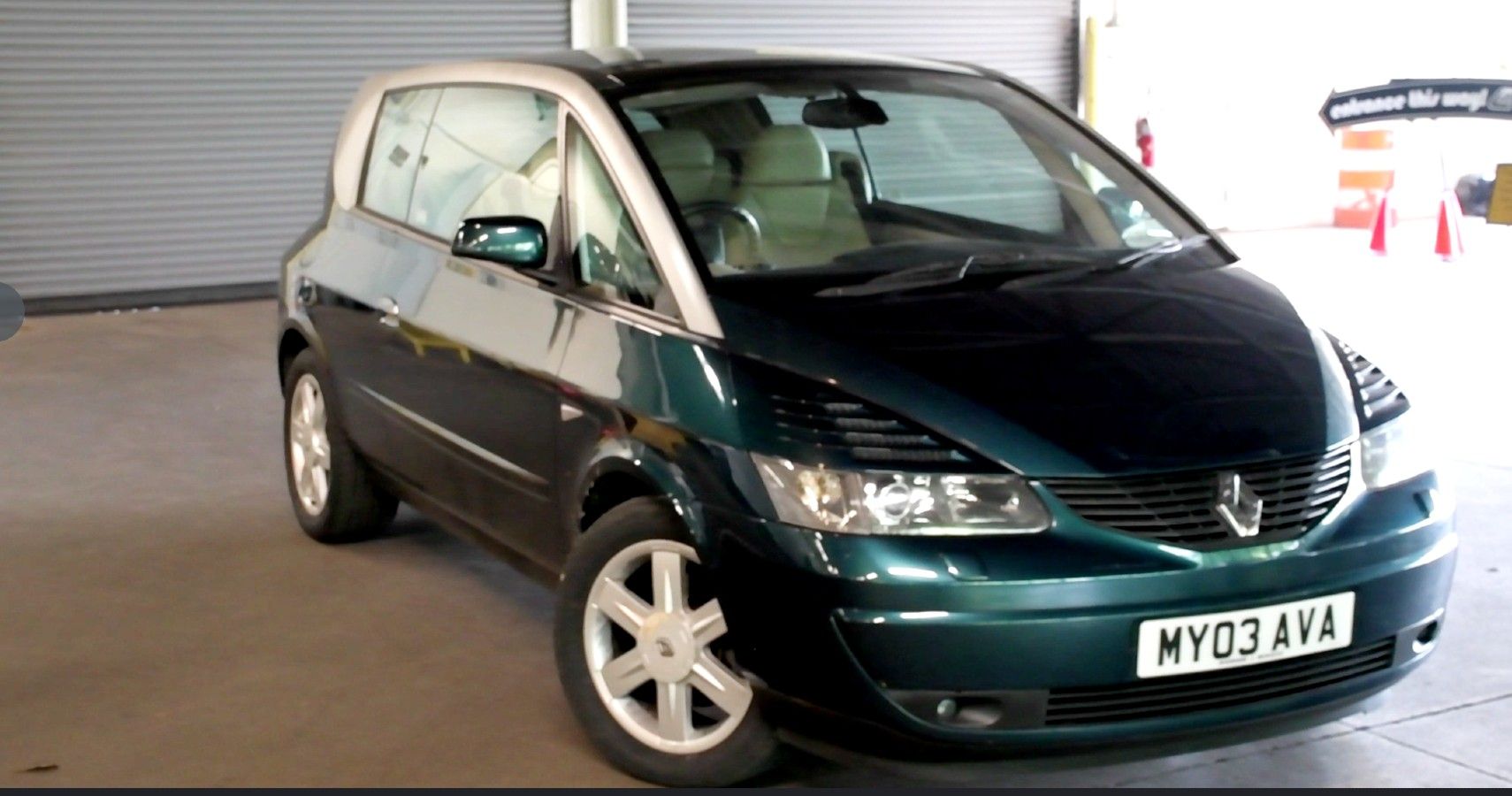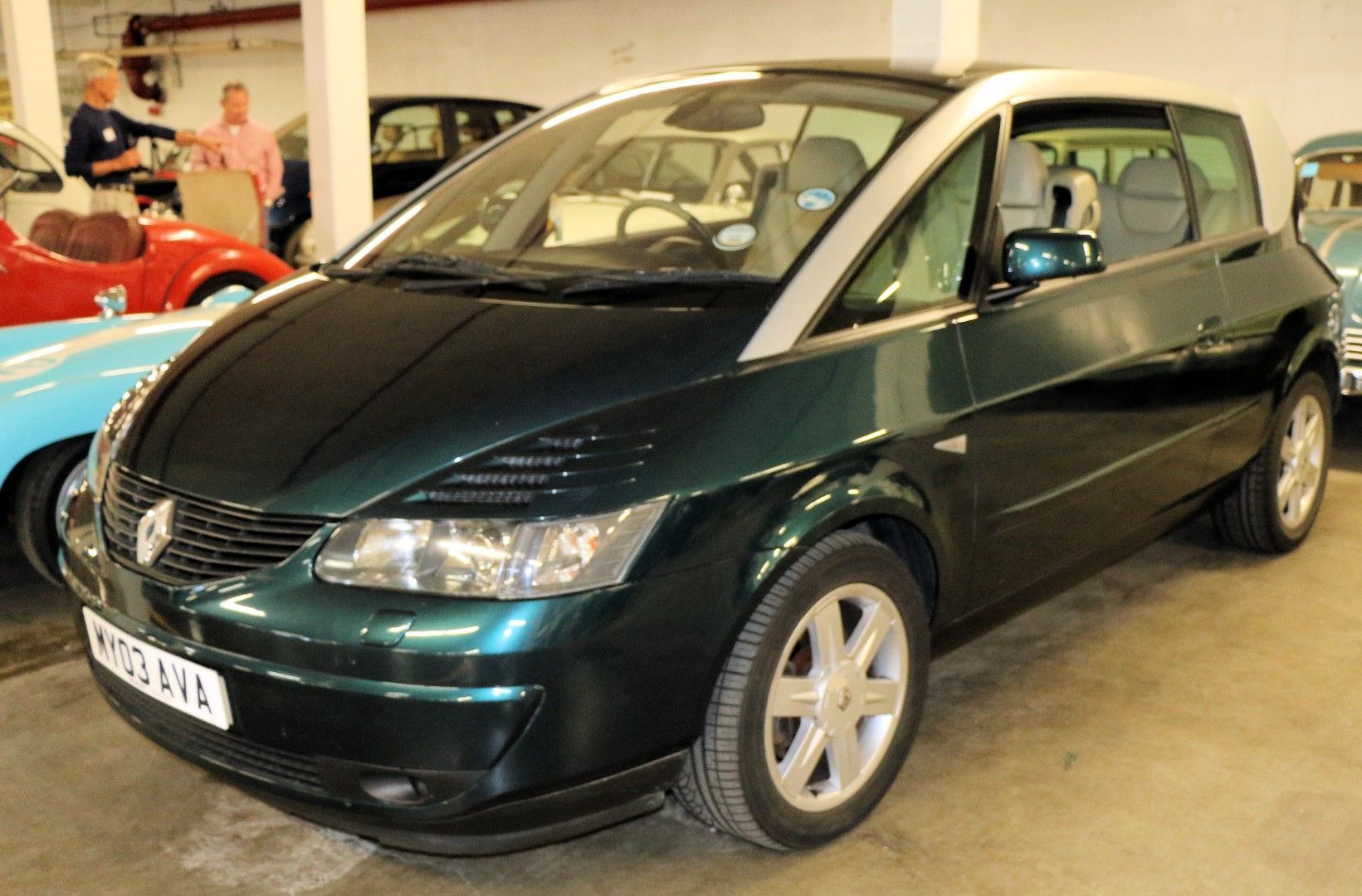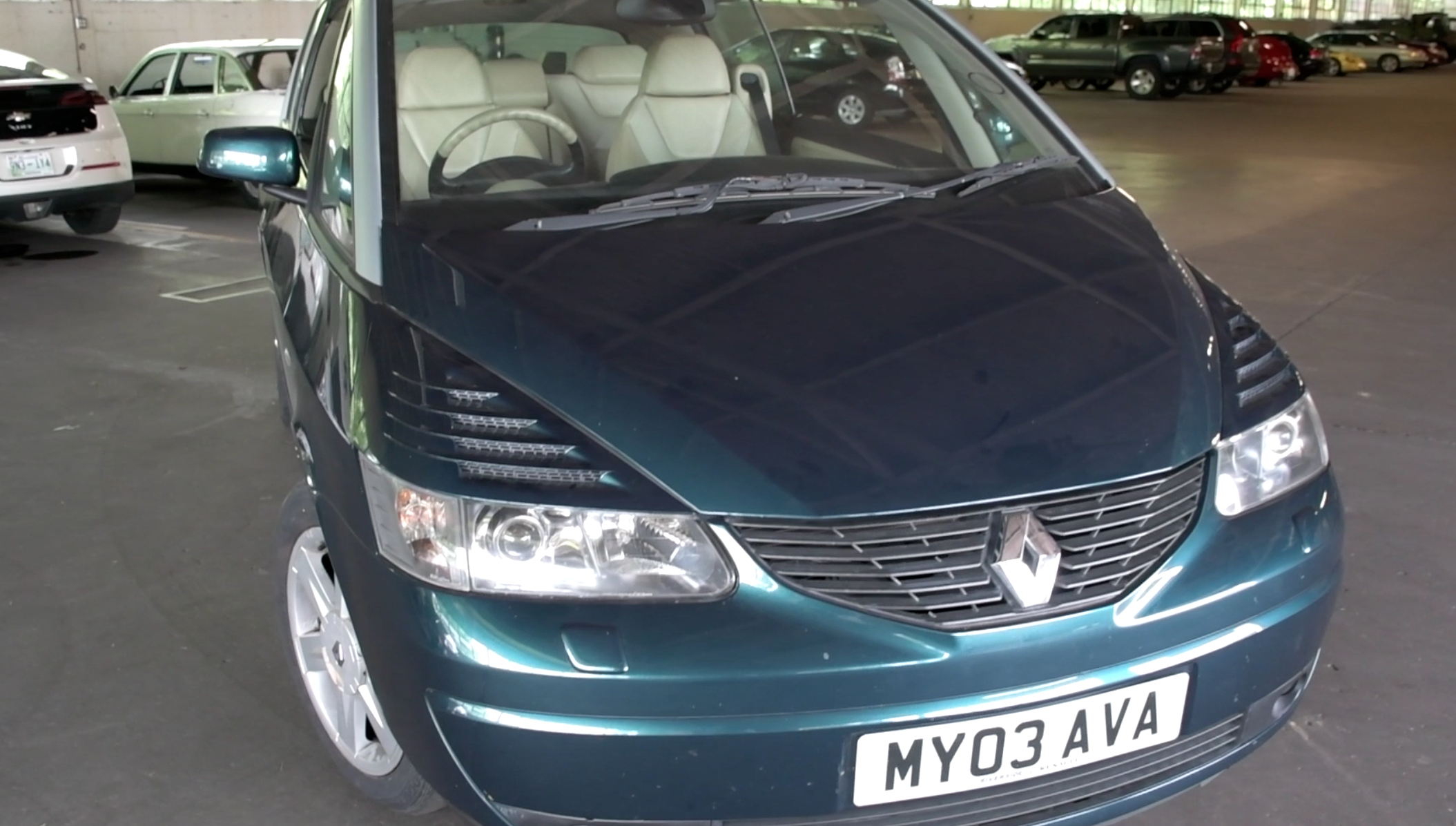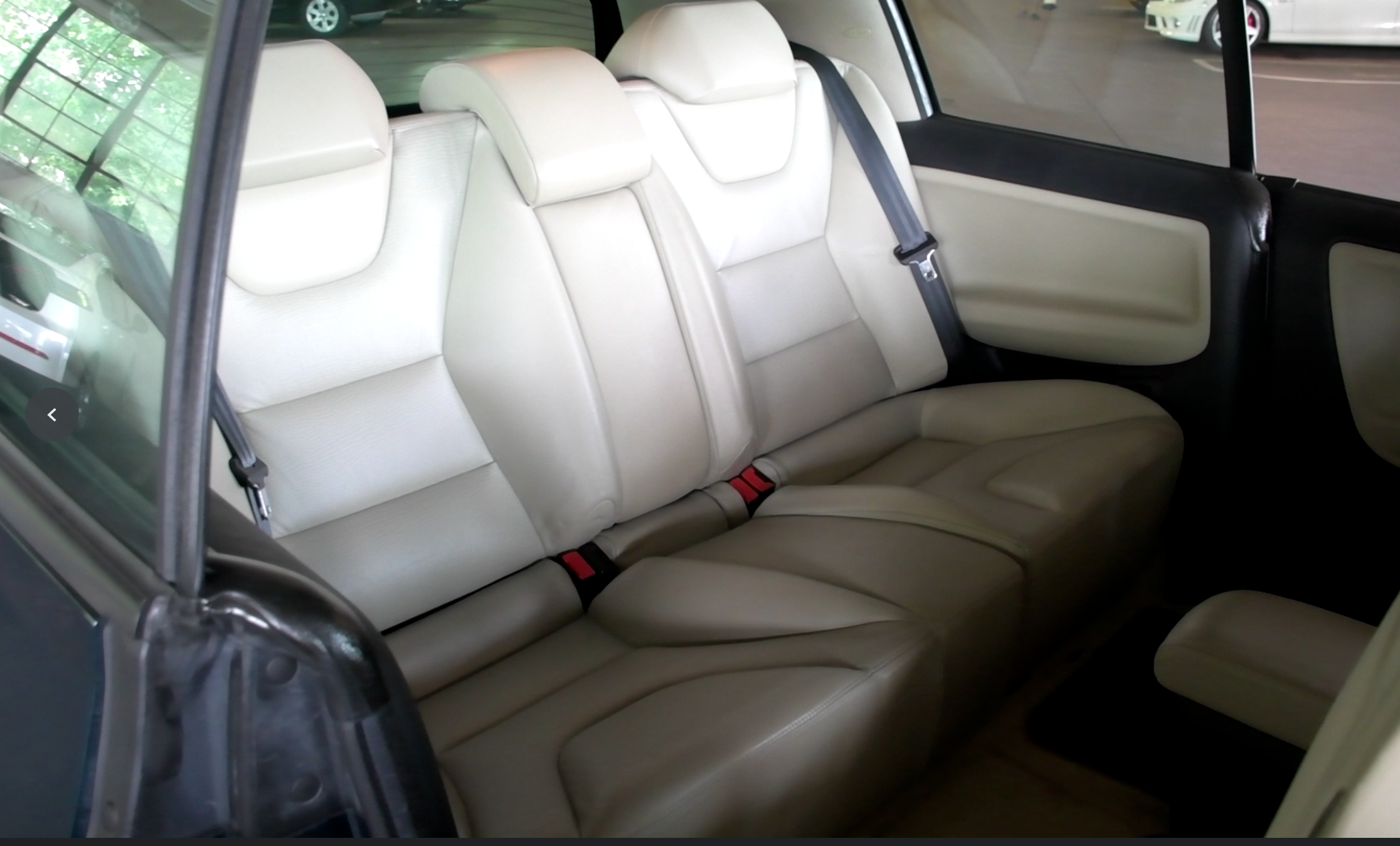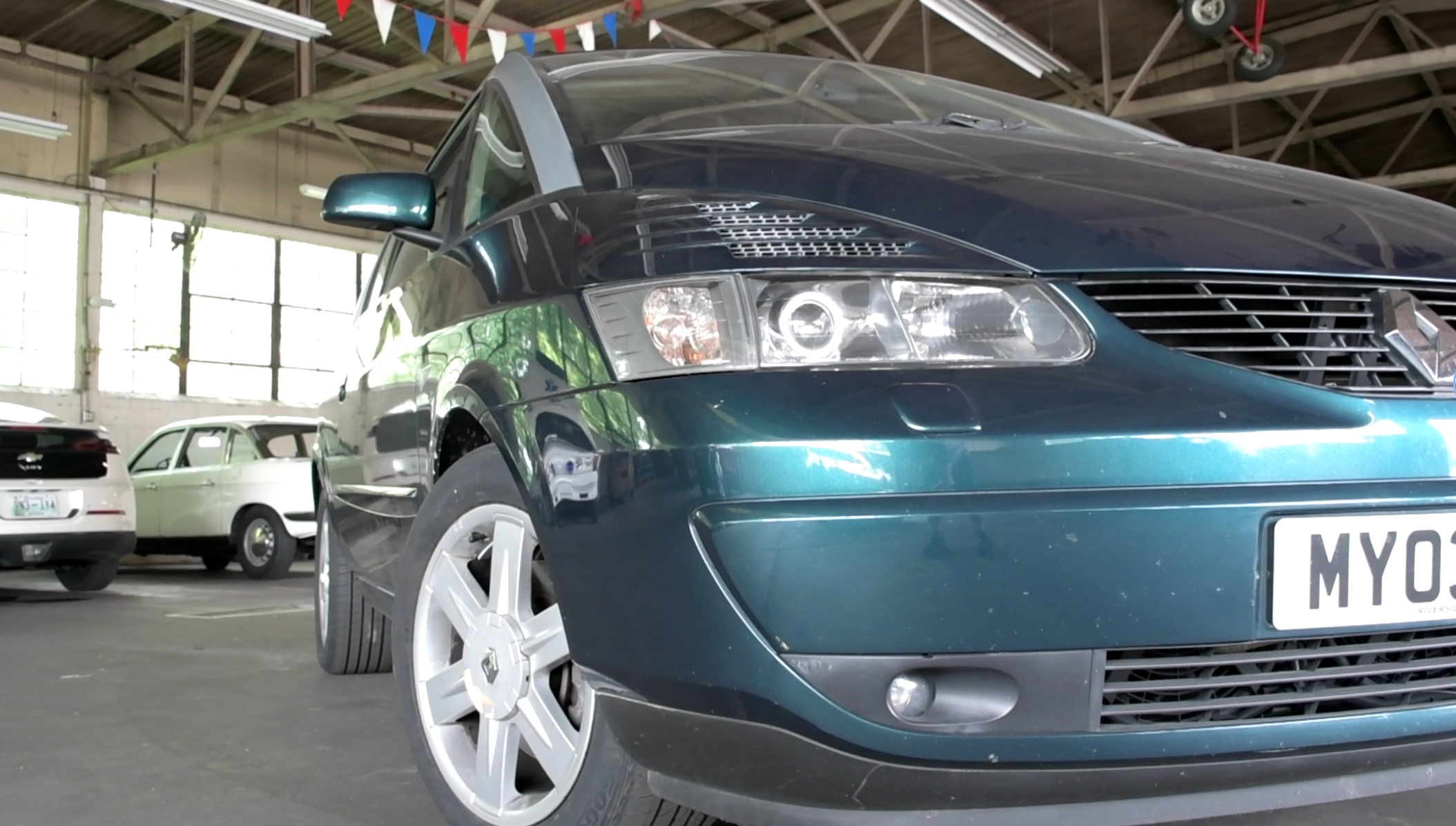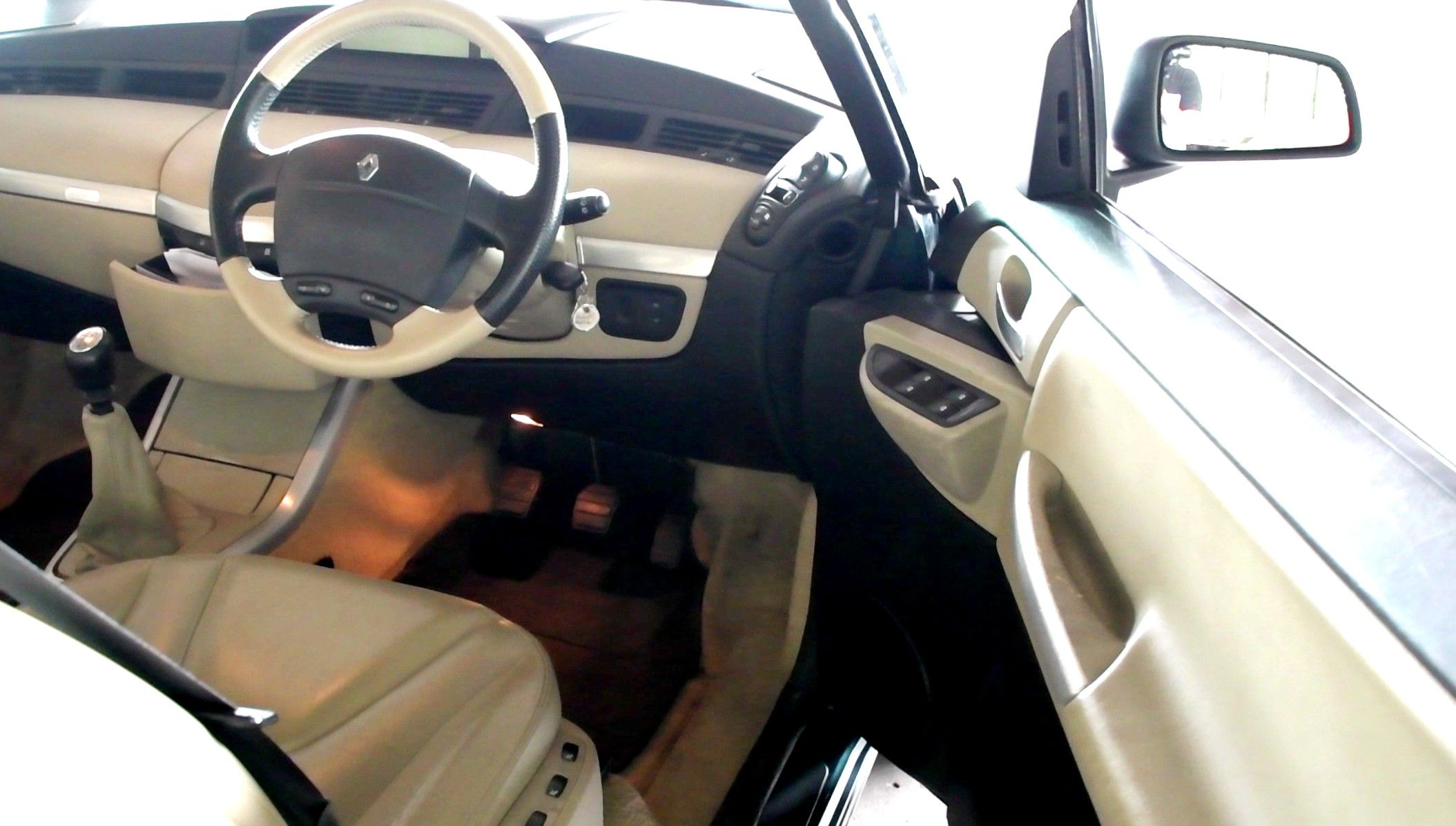French automakers tend to make cars in their own unique and ostentatious way, and the Renault Avantime might be the most exceptional example of that flair. Built at a time when the company wanted to appeal to the young generation that had grown up being driven around in the Espace and their parents who were now empty nesters, it pushed the limits of what a two-door vehicle really could achieve in practice. From every angle, it presents almost an uncanny valley feeling of strangeness, and to some extent that's intentional.
The project design manager, Thierry Metroz, said, "We wanted someone walking around the car to be continually astonished." Thanks to the incredible folks at Lane Motor Museum, I recently had a chance to experience that "forceful stern" and it was indeed quite boat-like. Let's dive into what makes the Avantime so special and why its legacy is only growing.
The Avantime Is A Moonshot From The Future
The word Avantime actually means "ahead of its time" and now, some two decades after its release, that feels incredibly appropriate. While the body and layout feel like the obvious place to start, let's dive into the DNA first.
At the heart of the Avantime was the buyer's choice of three engines. The base came with a 2.0-liter turbocharged four-cylinder engine, and a 2.2-liter diesel was also available. The Avantime we had the chance to test came with the top-of-the-line 3.0-liter V6. It makes some 207 horsepower and 236 lb-ft of torque and sends that power to the front wheels via a six-speed manual transmission. An automatic five-speed was also available, but the row-your-own unit is far more engaging. That active interaction is at the heart of everything the Avantime was attempting to achieve.
Renault wanted to make the Avantime a deeply innovative and aspirational vehicle, and it's easy to see how far they thought the concept could go based on the introduction video that preceded it at its debut. The driver finds herself using the trio of screens inside to look at her Avantime—get this—from the outside! There are even chilled metal cups stowed away in the center console, and a fancy latch activator button hidden inside the Renault logo on the hatch.
What might be more shocking, though, is how much of this concept actually made it to production. Perhaps the most controversial feature of the Avantime was the decision to produce a minivan-sized product with only two doors (three if you count the hatch). Not only did that choice make it to production, but it did so with something that Renault called the "double-kinematic" hinge system, which allowed the entire door to move away from the body of the car when opened. More on that later. It also arrived with the giant slits above the headlights, a massive panoramic glass sunroof, and no B-pillars. That makes the Avantime one of the largest "shooting brakes" ever made, even today.
The Avantime Is An Experience Before The Drive Begins
While the folks at Renault might have failed at astonishing the Avantime's onlookers each time they saw it, it still manages to incite them to look a bit longer. Regardless of the viewing angle, this car—er, minivan—looks like nothing else on the road today. If anything, it reminds us of a precursor to the Mercedes-Benz R-Class. It might not be a looker, but there's no getting around its defiant and bold styling.
Take the rear taillight situation as just one very clear example of the parent company's disregard for tradition. Today it looks incredibly strange, but at the time it was aggressively fashionable. Above the headlights, there are functional air intakes that feed the cabin with fresh air, and the absence of the B-pillar really does wonders for keeping this vehicle from looking like a standard MPV.
Before popping into the Avantime one must, of course, open those double-kinematic doors, and right away it's easy to notice that they simply don't achieve the goal that they were intended to. Yes, they do bring the door further away from the vehicle than it might have otherwise been. However, that really only applies to the front portion of the door. Take a quick glance at these two similarly aged Renaults and decide which one looks easier to climb into.
Those doors are both as far open as they go. Despite being smaller, the Megane on the right is considerably easier in terms of ingress and egress. Still, once inside, the Avantime is quite the posh place to be. The seats are incredibly luxurious and offer more support and comfort than many cars made and sold today. The rear seats are actually elevated above the position of the front seats to provide what Renault called "Theatre Seating". For a taller person, that simply makes the rear seats less practical since they have less headroom. For shorter folks, though, they're just shy of Rolls-Royce levels of quality.
The front seats are a bit more standard fare, but the layout of controls sends the eccentricity back into the stratosphere. Both front passengers have their own set of personal climate controls mounted near the bottom of the A-pillar. The entire dash is clad in leather and creates a nearly flat shelf from one side of the car to the other.
Storage can be found between the front seats as well as on each door card and in the passenger side glove box. Cargo space is outstanding for a GT car but pretty ordinary for a van. The rear hatch opens up far more than one might expect and provides copious storage behind the rear seats. There's even a plaque between the seats that designates which Avantime you're in. Of course, that's important because as one of the largest failures in automotive history, very few were actually built and sold. Let's talk about why.
Just Over 8,500 Avantimes Were Ever Sold
Many sources point to a delay in production and then the release of the more practical Renault Vel Satis as the main reason for the failure of the Avantime and certainly, those factors played a role. Truthfully, though, this thing features '90s supercar practicality without any of the benefits.
Getting into the rear seats isn't wildly hard, but it's certainly not simple or intuitive. Even the lever to move the front seat forward doesn't move the way you expect it to. But the real problem is up front where those double-kinematic doors actually make entry and exit far harder than it would be with a regular door. There's very little area to swing your leg in or out of the vehicle, which made daily use of the Avantime a bit of a chore. That would be fine if the driving experience was outstanding, but that's not the case either.
On a highway, over a long journey, the Avantime would be totally fine. Renault wanted to create a sort of larger Grand Touring vehicle and to that end, it's almost there. It's comfortable and quiet inside. The trouble comes when you throw a turn or two at it. There's simply no hiding the fact that this car is sitting on a minivan chassis, and it's the same size and weight as a male northern elephant seal. Even the worst actual GT cars are somewhat fun in a turn, and not in the terrifying way that the Avantime can be. Body roll is instantaneously present and can quickly make your connection to the controls feel less secure.
Acceleration is, as one would imagine, less than shocking. When it was brand new it was said to sprint from 0-60 in 7.8 seconds, but it feels slower than that. Braking performance is reasonable and though our test car had some rust to knock off, they never gave us reason for concern. To put it quite simply, the Avantime drives like a minivan on the latest fad diet. It's down a few pounds compared to what you might expect, and it has athletic aspirations, but try and make it actually do anything sporty, and it'll turn on you quickly.
Ultimately, combining that lack of real driving prowess with an equal dispensation of practicality left the Avantime with very few buyers that felt like it was the ultimate choice. It does offer some good things like excellent visibility and lots of storage, but the driving experience itself isn't nuanced enough considering how unique the rest of the car is. Today, it's growing in popularity both because of its rarity and how completely odd it is in practice. A lack of real-world practicality will likely keep it in a very niche space for the rest of time. It will never offer the same levels of use that something like the Pontiac Aztek or the Fiat Multipla might, but it will always be weirder.
Special Thanks to Lane Motor Museum and @GingerlyCaptured (Photography).

